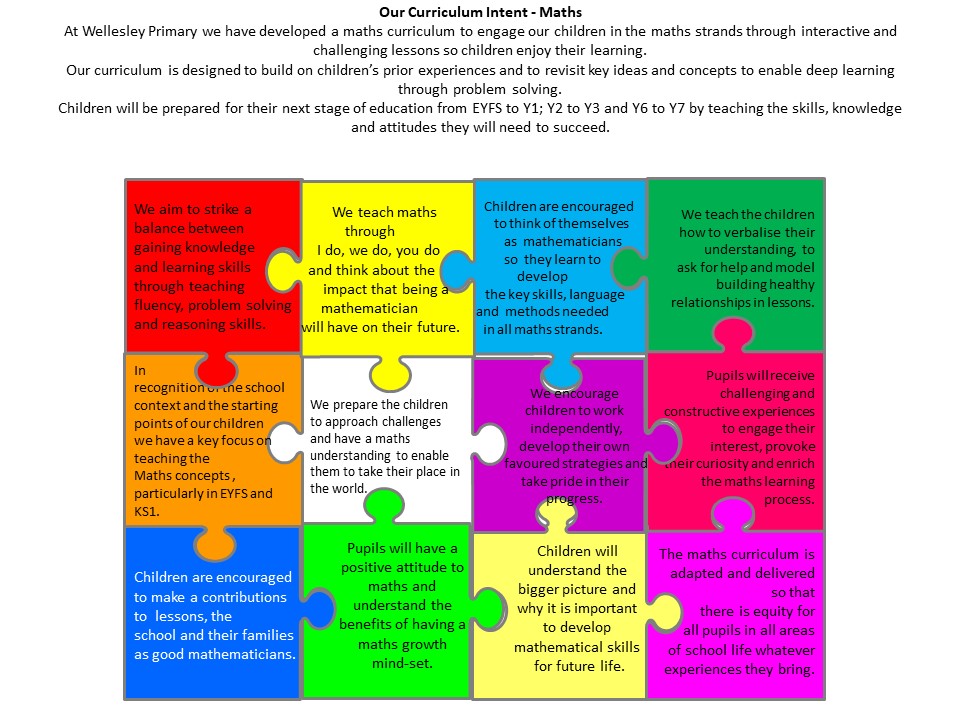Year 3 Maths
Autumn
In the Autumn term we will begin by looking at place value, learning to compare and order numbers up to at least 1000 and to read and write numbers up to at least 1000 in numerals and in words and to count from 0 in multiples of 50 and 100. We will then look at partitioning these numbers into hundreds, tens and units and calculating what is 10 or 100 more or less than a given number. We will use this knowledge to move on to methods of addition and subtraction including; learning to add and subtract numbers mentally, including a three-digit number and ones; a three-digit number and tens; a three digit number and hundreds; adding and subtracting numbers with up to three digits, using formal written methods of columnar addition and subtraction; estimating the answer to a calculation and use inverse operations to check answers and solving problems, including missing number problems, using number facts, place value, and more complex addition and subtraction. Finally we extend the children's knowledge of multiplication and division through learning to: recall and use multiplication and division facts for the 3,4 and 8 multiplication tables and write and calculating mathematical statements for multiplication and division using the multiplication tables they know.
Spring
In the Spring term we will continue to extend the children's knowledge of multiplication and division through learning how to solve problems including missing number problems involving multiplication and division, positive integer scaling problems and corresponding problems in which n objects are connected to m objectives; including for two-digit numbers times one-digit numbers, using mental methods and progressing to formal written methods. We will look at measurement which will involve learning to: measure, compare, add and subtract; lengths (m/cm/mm); solve problems, including missing number problems, using number facts, place value and more complex addition and subtractions; measure the perimeter of simple 2D shapes and continue to measure using the appropriate tools and units, including comparing and using mixed and simple equivalents of mixed units. We will move on to fractions where we will develop the children's knowledge by learning to: recognise and use fractions as numbers; unit fractions and non-unit fractions with small denominators; count up and down in tenths and recognise that tenths arise from dividing an object into 10 equal parts and in dividing one-digit numbers or quantities by 10. We will return to measurements applying our knowledge by learning to measure, compare, add and subtract: lengths (m/cm/mm); mass (kg/g); volume/capacity (l/ml); solve problems, including missing number problems, using number facts, place value, and more complex addition and subtraction and continue to measure using appropriate tools and units, progressing to using a wider range of measures, including comparing and using mixed units (for example, 1kg and 200g) and simple equivalents of mixed units (for example, 5m = 500 cm).
Summer
Into the summer we will continue our fractions work, learning to: recognise and show, using diagrams, equivalent fractions with small denominators; add and subtract fractions with the same denominator within one whole; compare and order unit fractions, and fractions with the same denominators and solve problems that involve all of the above. Next we look at money and how to add and subtract different amounts to gve change. After this we will look at time which will involve learning to: tell and write the time from an analogue clock, 12-hour and 24-hour clocks; estimate and read time with increasing accuracy to the nearest minute; record and compare time in terms of seconds, minutes and hours, using vocabulary such as o'clock, am/pm, morning, afternoon, noon and midnight; know the number of seconds in a minute and the number of days in each month, year and leap year and to compare durations of events (for example, calculate the time taken by particular events or tasks). Next we explore geometry and will be learning to recognise angles as a property of a shape or a description of a turn; identify right angles, recognise that two right angles make a half-turn, three makes three quarters of a turn and four a complete turn; identify whether angles are greater than or less than a right angles; identify horizontal and vertical lines and pairs of perpendicular and parallel lines; draw 2-D shapes ad make 3-D shapes using modelling materials and recognise 3-D shapes in different orientations and describe them. We will end the year looking at statistics and learn to interpret and present data using bar charts, pictograms and tables and solve one-step and two-step questions (for example, "How many more?" and "How many fewer?") using information presented in scaled bar charts and pictograms and tables.

